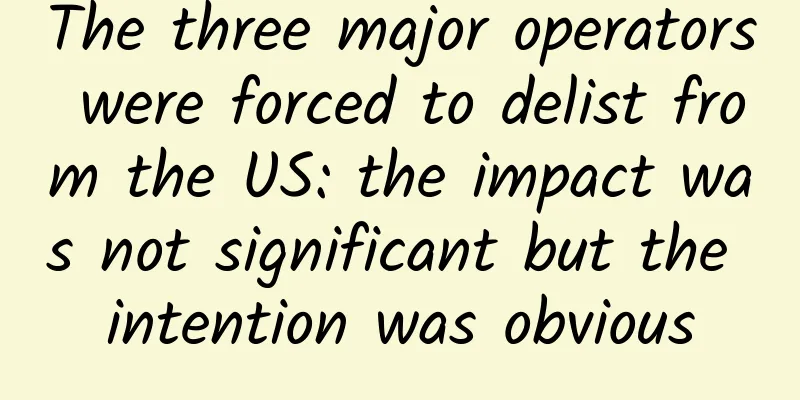Monitor infrastructure to prevent unexpected downtime

|
【51CTO.com Quick Translation】Infrastructure monitoring is an integral part of infrastructure management. It is the first line of defense for IT administrators to prevent unexpected downtime. Serious problems can cause a lot of downtime in the infrastructure, sometimes resulting in serious financial losses. Monitoring systems collect time series data from your infrastructure so that it can be analyzed to predict upcoming problems with the infrastructure and its underlying components. This gives IT administrators or support staff time to prepare and apply solutions before problems occur. A good monitoring system has the following functions: 1. Measuring infrastructure performance over the long term 2. Node-level analysis and alerting 3. Network-level analysis and alerting 4. Downtime analysis and alerting 5. Answer the Five Ws of Incident Management and Root Cause Analysis (RCA): ○What is the actual problem? ○When did it happen? ○Why does it happen? ○What system or component is down? ○What needs to be done to avoid it in the future? Build a strong monitoring system There are many tools available to build a viable and robust monitoring system. The only decision is which tool to use; the answer lies in what you want to achieve with monitoring and the various financial and business factors to consider. While some monitoring tools are proprietary, many open source tools (unmanaged software or community-managed software) can perform as well or better than closed source tools. This article will introduce open source tools and how to use them to build a powerful monitoring architecture. Log collection and analysis Logs can help a lot. Not only do logs help debug issues, they also provide a wealth of information to help predict upcoming problems. When you encounter a problem with a software component, the first thing you should analyze is the logs. Both Fluentd and Logstash can be used to collect logs; the only reason I chose Fluentd over Logstash is because it is independent of Java processes; it is written in C + Ruby and is widely supported by container runtime environments such as Docker and orchestration tools such as Kubernetes. Log analytics refers to analyzing the log data collected over time and generating real-time log metrics. Elasticsearch is a powerful tool for this purpose. Finally, you need a tool to collect log metrics so that you can visually display log trends using easy-to-understand charts and graphs. Kibana is my favorite choice in this regard. Figure 1. Log workflow Because logs may contain sensitive information, there are a few security points to keep in mind: •Always transmit logs over a secure connection. •Logging/monitoring infrastructure should be implemented within a restricted subnet. •Access to monitoring user interfaces (such as Kibana and Grafana) should be limited to stakeholders only. Node-level metrics Not everything is logged! Yes, logs monitor software or processes, not every component in your infrastructure. Operating system disks, externally mounted data disks, Elastic Block Store, CPU, I/O, network packets, inbound and outbound connections, physical memory, virtual memory, buffer space, and queues are some of the major components that rarely appear in logs unless they fail. So, how do you collect this kind of data? Prometheus is the answer. You simply install the exporter for the specific software on the VM nodes and configure Prometheus to collect time-based data from these unattended components. Grafana uses the data collected by Prometheus to visually display the current status of the node in real time. If you’re looking for a simpler solution for collecting time series metrics, consider Etricbeat, Elastic.io’s internal open source tool that can be used with Kibana as a drop-in replacement for Prometheus and Grafana. Alerts and Notifications Without alerts and notifications, you can’t get the most out of monitoring. Unless stakeholders (regardless of where they are) are notified of issues, they can’t analyze and resolve the problem, prevent customers from being impacted, and avoid it in the future. Prometheus uses its internal Alertmanager and Grafana to create predefined alert rules, which can send alerts based on the configured rules. Sensu and Nagios are other open source tools that provide alerting and monitoring services. The only problem people have with open source alerting tools is that the configuration time and process can sometimes seem laborious, but once set up, these tools work better than proprietary tools. However, the greatest advantage of open source tools is that we can control their behavior. Monitoring workflow and architecture A good monitoring architecture is the backbone of a strong and stable monitoring system. It might look like this diagram. Figure 2. Devops monitoring architecture Finally, you have to choose the tool based on your needs and infrastructure. Many enterprise organizations use the open source tools discussed in this article to monitor the infrastructure and ensure high uptime. Infrastructure monitoring: Defense against surprise downtime [Translated by 51CTO. Please indicate the original translator and source as 51CTO.com when reprinting on partner sites] |
<<: Picture | Someone finally explains 5G clearly...
Recommend
LOCVPS: Hong Kong Confederation/Cloud VPS 40% off, 2GB memory package starting at 33 yuan per month
LOCVPS (Global Cloud) is an early established Chi...
Ms. Meng: Being brave is not about not being afraid, but about holding on to the ideals in your heart.
Last night, a letter from a Japanese person was s...
Have you ever been cheated by your cell phone plan? It’s time to say “no” to your carrier
As a non-rich person, have you ever applied for v...
Prosperity through action, win-win ecological era | Huawei China Ecosystem Partner Conference 2018 grand opening
Huawei, a leading global information and communic...
HostKvm: Hong Kong CTG bandwidth/traffic upgrade 20% off $7.6/month-2G memory/40G hard disk/30M bandwidth
HostKvm has upgraded the bandwidth and traffic of...
SDN network architecture: three layers and three interfaces
As we all know, SDN is a network with a separate ...
I have no resistance to these 6 excellent computer software
[[389531]] Excellent computer software can greatl...
Shi Kai: ThoughtWorks creates a competitive advantage for you
[51CTO.com original article] On December 1-2, 201...
To prevent 5G from the barrel effect, both Sub-6GHz and millimeter wave are indispensable
The wooden barrel effect is a well-known truth. 5...
Chen Peizhen, General Manager of DYXnet, the first-line: Analyzing the innovative architecture and development strategy of "AI + Cloud Network Security" service
On November 16, 2024, a grand event focusing on c...
Comprehensive understanding of TCP/IP knowledge system structure summary
1. TCP Knowledge System We analyze the TCP knowle...
UCloud: Shanghai/Beijing cloud server annual payment starts from 62 yuan, Hong Kong/Taiwan cloud server annual payment starts from 150 yuan
The tribe once shared information about UCloud, U...
20 lines of Python code to achieve encrypted communication
1. Introduction The Internet is full of eavesdrop...
An article reviews the top 10 wireless network technologies that connect tens of billions of terminals
With the development of the Internet industry, pe...
Increasing Adoption of 5G Technology to Drive Cellular IoT Module Market
The cellular IoT module market will reach $20.83 ...









